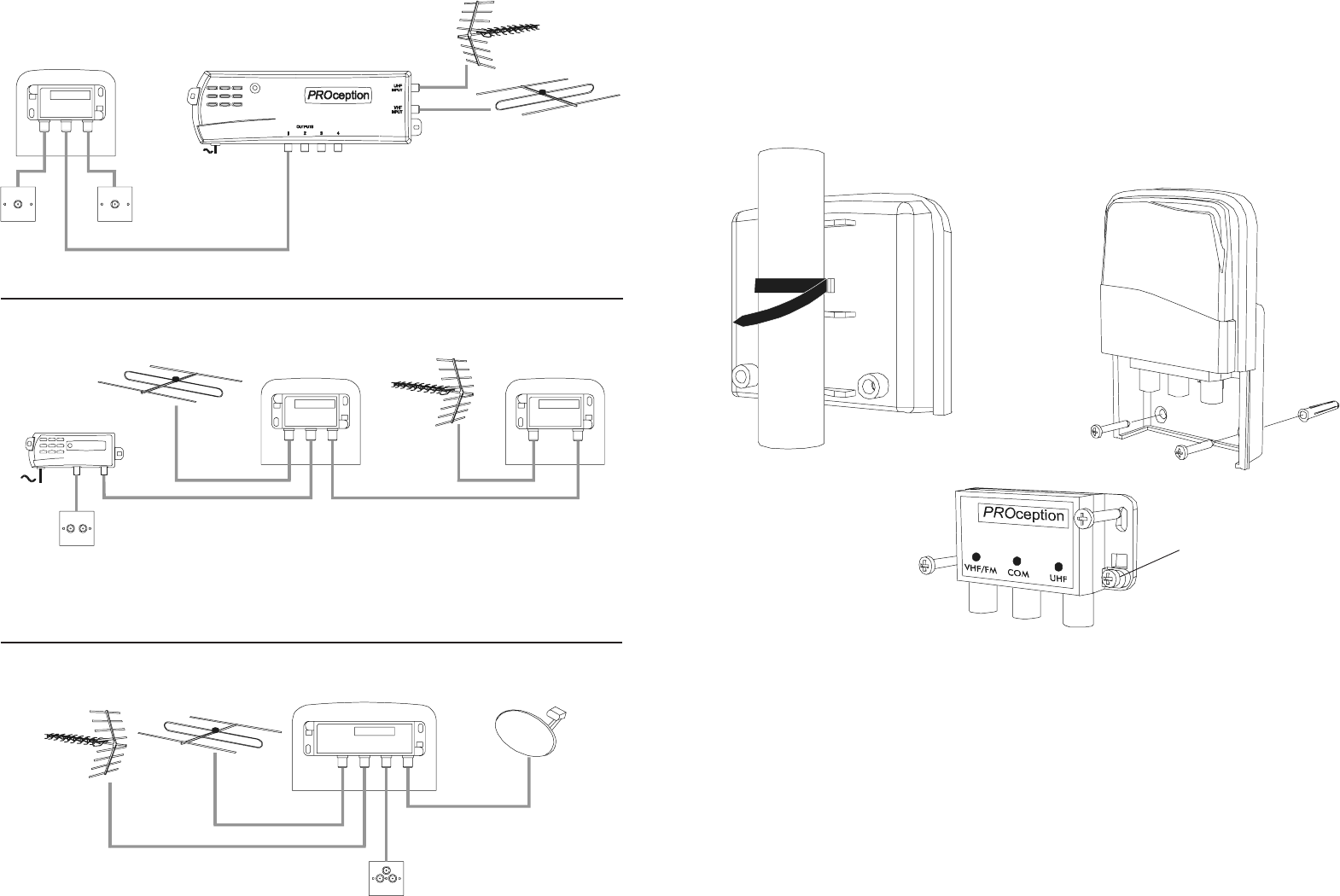
PRO ception
PRO
ception
PRO
ception
PRO
ception
PROception
Page 3Page 2
Signal connections
To preserve RF screening integrity the signal connections to the amplifier should be made
using good quality coaxial cable and connectors. This is particularly important with DTT to
minimise the ingress of impulsive electrical interference. The use of cable benchmarked
under the CAI scheme is recommended.
Crimp F connectors, used in accordance with the manufacturers instructions, will give the
best results. The importance of achieving sound braid connections cannot be over-stressed.
System earth bonding
Earth bonding terminals are provided on the amplifier castings for use where necessary.
Distribution systems supplying signals to more than one household should comply with the
safety requirements of BS EN 50083-1. This effectively requires the system to be earth
bonded. (The use of isolated outlet plates is no longer recommended since they compromise
screening integrity and allow ingress of interference.)
Fixing
Methods for mounting the amplifier are illustrated in Figs. 5 to 7. The cable tie fixing is
intended to support the weight of the amplifier only. Cables should be taped to the mast at
intervals of approximately 400 mm to ensure that their weight is adequately supported.
Being fully screened, these amplifiers will not be affected by proximity to antennas. However
clearance of not less than 300 mm from the nearest part of an antenna should be observed
to avoid degrading the antennas performance.
Fig.5 cable tie fixing
Fig.6 fixing to flat surface
Fig.7 Fixing the amplifier
module directly (indoor
application only, discard
mouldings).
Earth terminal
(see text).
Fig.4 combining antennas and LNB
proCOM31VUS
proOUT13 outlet
Fig.2 splitting a distribution system feed to separate outlets
proCOM21VU
proOUT11C outlets
amplifier proAMP24
Fig.3 using a UHF preamplifier
proCOM21VU
proOUT12C outlet
power unit
proPSU11F
preamplifier
proMHD11L
Note: a preamplifier cannot be powered via the proCOM31VUS since there is no line-power
pass to the UHF port.
VHF/FM
UHF
UHF
VHF
VHF/FM
UHF
VHF/FMUHF LNB




